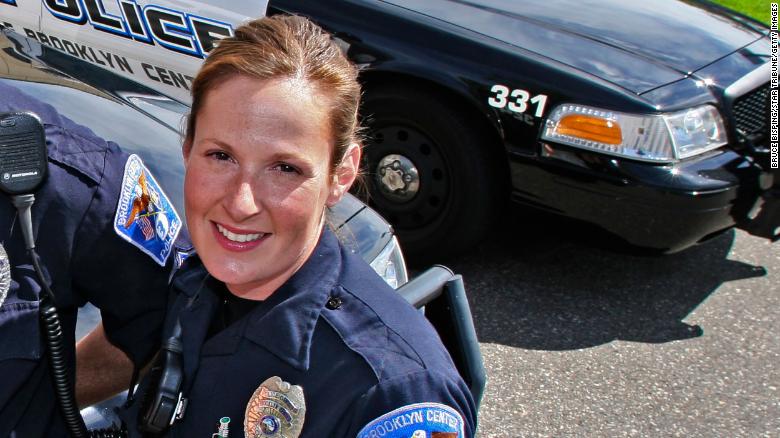Kim Potter’s trial ended on December 23 after a jury found the former suburban Minneapolis police officer guilty of two counts of accidental and involuntary manslaughter for the murder of Daunte Wright during a traffic stop in April.
Kim Potter, who is white, fatally shot the 20-year-old black man in Brooklyn Center after police detained Wright on an overdue ticket and hung air freshener. During the stop, the officers learned that he had a pending warrant and tried to arrest him.
In 90-second body camera video of the shooting, shared by the city’s chief of police less than 24 hours after the incident, Potter can be heard repeatedly yelling “Taser” before shooting Wright. After firing her pistol, she yells, “Wie ***! I just shot him!”
Kim Potter was found guilty of involuntary and accidental manslaughter and her sentence is scheduled for February 18, 2022.
Although the maximum penalty for aggravated manslaughter is 15 years in prison, because Potter has no criminal record, Minnesota sentencing guidelines recommended a sentence of approximately 6 to 8.5 years in prison.
This is what we know about Potter.
Agent Kim Potter tendered her resignation after the fatal shooting.
Potter was a 26-year police veteran
Kim Potter, 49, was with the Brooklyn Center Police Department for 26 years, according to the Minnesota Office of Criminal Apprehension. She joined the department in 1995, according to the Minneapolis Star Tribune newspaper.
She served as the president of the police union in 2019, had been on the department’s bargaining team and worked as a field training agent, the Tribune reported.
Kim Potter resigned from the department two days after the shooting.
The veteran officer testified for hours at the trial and burst into tears several times as she described the “chaotic” moments that led to the shooting. She said she was “very distressed” and regretted what had happened.
In her testimony, Potter said prior to Wright’s death that she had never deployed her Taser or fired a pistol while on duty, and that she had never had a complaint against her.
Potter’s body camera video was posted after the shooting
Former Police Chief Tim Gannon, who also resigned after the shooting, said at the time that the part of the body camera footage led him to believe that the shooting was accidental and that Potter’s actions prior to the shooting were consistent with department training on tasers.
Gannon said, “the agent intended to deploy her Taser, but instead shot Mr. Wright with a single bullet.” The fatal shooting appeared to be “an accidental discharge”.
The Minnesota Office of Criminal Detention examined Potter’s seatbelt and found that her pistol was holstered on the right side of her belt, while the Taser was on the left side, according to a press release from the U.S. attorney’s office.
Citing a criminal complaint, the press release said that the Taser is yellow with a black grip and is positioned in a straight position, “which means that Potter would have to use her left hand to remove the Taser from its holster.”
Sean Hendrickson, who teaches on the use of force in Washington, told Citizen Free Press that the only way he could understand Kim Potter mistaking a taser for a weapon is if she suffered from “cognitive overload.” He defined this overload as the brain going into fight or flight mode and driving an individual’s behavior.
Hendrickson said the situation with Potter and Wright, based on the only video posted, did not appear “to be developing at a rate that equates to cognitive overload like that.”
Kim Potter’s attorney also represents an agent in the George Floyd case
Earl Gray, a St. Paul attorney, represented Kim Potter.
Gray is also the attorney for Thomas Lane, one of four officers charged in George Floyd’s death. He was also a defense attorney for Jeronimo Yáñez, the former St. Anthony, Minnesota police officer, who was found not guilty of second-degree murder in the fatal shooting of Philando Castile.
Kim Potter was also represented by Paul Engh.
Mistaking a pistol for a Taser is rare and was central to the murder charges against Potter. During the trial, defense attorneys argued that Potter’s actions fell short of the level of a crime, while the prosecution argued that her fatal error was due to recklessness and negligence.

